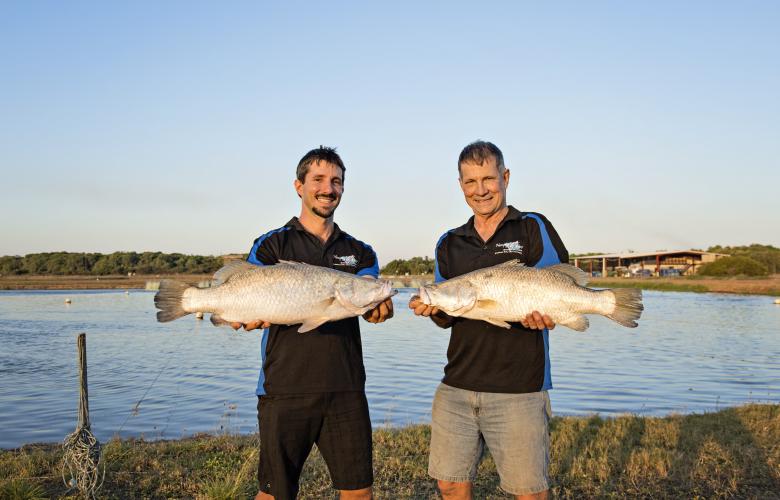Barramundi farm set to represent the Northern Territory on national stage
Contact
Barramundi farm set to represent the Northern Territory on national stage
Commended for their environmental leadership, Humpty Doo Barramundi has been working to cultivate a sustainable food chain and re-establish a functional wetland since 1993.
A fish farm successfully producing 1500 tonnes of saltwater barramundi is set to fly the flag for the Territory after winning the Australian Government Landcare Farming Award at the Northern Territory Landcare Awards.
Humpty Doo Barramundi will go on to represent NT while competing for the Australian Government Landcare Farming Award title at the National Landcare Awards in 2020.
Established in 1993, the secret to Humpty Doo Barramundi’s success is a sustainable water treatment system with ‘little to no exchange with the surrounding waters’ forming the basis of a food chain.
Dr Shane Norrish, CEO at Landcare Australia, commended HDB on their outstanding accomplishments.
‘It’s an honour to be able to recognise the great work being carried out by Humpty Doo Barramundi,’ said Dr Norrish.
‘A hugely deserved winner, the recirculated water sustains intense aquaculture production with efficiencies that are unique in Australia whilst meeting both animal welfare and environmental considerations.
‘And through their tireless work, Humpty Doo Barramundi is nurturing the voices of environmental leadership and we’re incredibly proud to help shine a light on their inspiring, important efforts.’
How does the Humpty Doo Barramundi farm work?
Brackish water is extracted from the tidal Adelaide River during the dry season months and pumped into a constructed wetland water treatment system that surrounds the production ponds.
As the fish produce ammonia and nitrites, these metabolic waste products feed into the constructed wetland water treatment system where they’re filtered through vegetation and broken down and consumed by naturally occurring bacteria and microalgae. As waste water moves through the constructed wetlands nitrifying bacteria will begin to colonise. These bacteria will convert toxic ammonia and nitrites into nontoxic nitrates via oxidation.
‘Once the nitrification process is complete, the water is exchanged back into the production ponds. Throughout this process aquatic microalgae and macrophypes consume waste products and form the basis of a food chain for small native fish and invertebrates,’ said Dan Richards of Humpty Doo Barramundi.
‘The constructed wetland performs to a standard where it can successfully maintain the conditions necessary for the maintenance and growth of over 1500 tonnes of barramundi each year with little to no exchange with the surrounding waters.’
More from The Business Conversation:
‘Every fish has a story’: search for Australia’s best Fish and Chips ends in Townsville
National Family Business Awards: celebrating the heartbeat of Australian business
How a so-called 'stupid idea' led to a Telstra Business Award-winning movement




